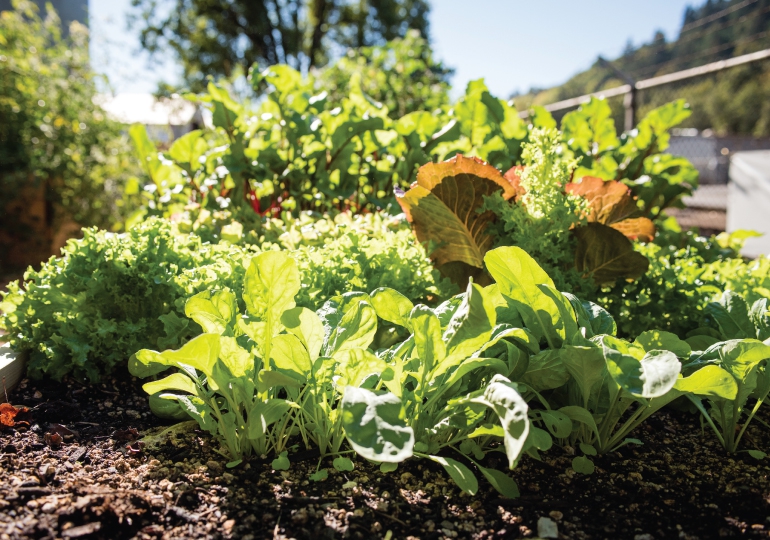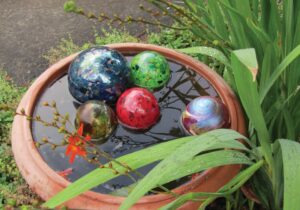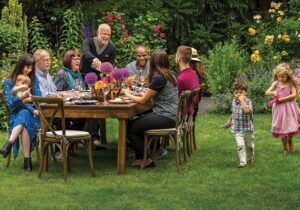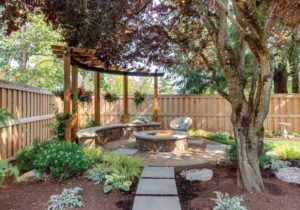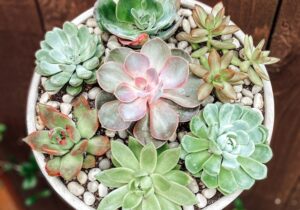Photos by Shawn Linehan
Known for the lush greenery that lines our beautiful hiking trails, the tumbling waterfalls nestled in between cliff sides and the opulent varieties of plant life, much of Oregon is a picturesque scene many flock here to take in. As some city dwellers aren’t always able to journey out into the calm of nature, replicating such beauty in our backyard becomes necessary.
Living off the fruits of your labor is not only fulfilling but financially viable, especially knowing that gardens can be so much more than just beautifully colored flowers. Starting an edible garden may seem like a daunting task for beginners, but per our experts, it’s easier than you think!
“Many people think they don’t have a green thumb, and that’s the misconception,” says Marc Boucher-Colbert, principal of garden consultation and specialty company Urban AG Solutions.

“It’s really only a set of skills, and it’s not like anyone is a born gardener. Just like anything else, the amount of time and energy you put into something generally correlates with your success.”
A different mentality and stronger motivation in tow, evaluating your soil is an integral step in starting your own edible garden. Aside from varying levels of metals and pH balance, soil in the Pacific Northwest tends to be very clay-like and compacted, which doesn’t allow for the proper amount of drainage roots need to prevent rotting and decay. Raised beds are good at inhibiting this on top of being much more comfortable to garden in.
“There are a lot of advantages of growing in raised garden beds, but probably the biggest one is you get to choose the soil you’re growing in,” says Ian Wilson, owner and founder of Portland Edible Gardens, an organization built on aiding others with their gardens. “There’s a lot of variation [in soil] from one place to another, especially in an urban environment. Choosing your soil is a big advantage, and you get better drainage.”
Good soil isn’t all it takes, though. When it comes to yielding an impressive harvest from scratch, good seeds are intrinsic. Boucher-Colbert recommends sticking to seeds from growers in your region, who know the climate. Working with seeds packaged in, say, a humid climate like that of North Carolina wouldn’t produce a good bloom in Oregon’s mild climate.

Radishes and garlic are perfect for kids. The seeds are just big enough for little fingers to grasp and within a month those same fingers will be yanking up bright red and peppery vegetables that are perfect for quick pickling, adding to pastas or serving alongside some tasty kimchee.
“If you plant the wrong variety, it’s an uphill battle the whole way, and you may not achieve success as a gardener,” Boucher-Colbert says. Some of the greatest local seeds, he recommends, come from Territorial Seed Company in
Cottage Grove.
For beginning gardeners, starts are the better route to take as compared to seeds, because they make for a more successful journey. You can find almost any variety at nurseries around the state, and they leave more leeway when navigating a schedule for attention and care. “Growing things from seeds is always a little bit more tricky than growing things from starts, just because you have to grow them through the most delicate part of their life,” says Wilson.
Just like a human, a plant is most delicate in the earliest stages of its life. By starting certain plants indoors, you can extend the season and the life of the plant by tending to it in a more controlled environment. Areas with fluorescent lights can sprout some beautiful leafy greens, as they do best with lights on the blue spectrum. Tomatoes ripen best with red light, so a string of energy-efficient LEDs could go a long way for prepping those vines for the springtime.

Zucchinis and tomatoes, especially cherry tomatoes, happen to be some of the better beginning plants for those making their first attempts at gardening because they have a larger yield for a small amount of effort. And for an instantly gratifying crop, the slightly acquired taste of radishes can go from seed to feed in around 30 days.
Both Wilson and Boucher-Colbert agree on a few tips to get the process going, like using great soil, having extended access to sunlight (or the controlled light of an indoor grow), and a regulated water and drainage system. Wilson notes that if this is your first year gardening, starting with six to eight plants will help with not feeling too overwhelmed, but above all else, be confident! “With good sun, good soil and enough water, your vegetables will grow happily and abundantly,” says Wilson. “The only other thing they need is you!”

WHAT TO PLANT IN SPRING FOR SUMMER BOUNTY
![]() Greens:
Greens:
Leafy staples like cabbage, chard and spinach sprout beautifully by summer and are ideal for adding a strong bite of flavor to your salad mix and raw-food dishes. Plant these, along with lettuce varieties like black-seeded simpson or buttercrunch, in late March to April to see the best of them by summer.
![]() Beans:
Beans:
With the air and the soil starting to warm up, April to May is the ideal time for planting pole and bush beans. Kentucky blue, wonder, romano bush and tendercrop do amazingly well, as do certain types of lima beans for the areas of Oregon further from the coast.
![]() Herbs:
Herbs:
Perennial herbs like lavender, mint, rosemary and thyme thrive in moderate to full sun exposure, so starting these in May yields the best. Dill can only really be planted in May for our climate as well, but parsley has more of a larger window starting in February, depending on your location in the state.
![]() Squash:
Squash:
Both winter and summer squash taste quite delicious during the warmer months, and thankfully both can be planted in spring. Depending on your region, you may be able to start them as early as mid-April.
![]() Tomatoes:
Tomatoes:
Once May rolls around, test the temperature of your soil. Tomatoes thrive in soil with a temperature of around 60 degrees, so if it’s warm enough, you’re good to go!


